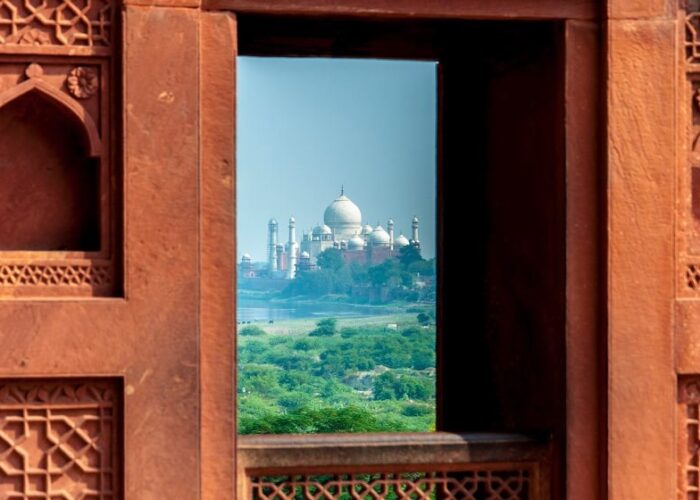If you travel to India, visiting the Taj Mahal, Agra is probably on your bucket list. The Taj Mahal is one of the Seven Wonders of the World and is at the top of everyone’s list when visiting India. Taj Mahal, the symbol of eternal love for the beloved, is undoubtedly the most fascinating piece of craftsmanship in India.
This architectural gem is not only the most precious monument in the country, but this UNESCO World Heritage Site has also been included as one of the new “Seven Wonders of the World”.
Engraved in white marble, the Taj Mahal, Agra looks like a glistening tear on the face of time. This wonderful mausoleum is known for its incomparable architectural design and fascinating backdrop. Located on the banks of the Yamuna River, the Taj Mahal looks sublime all year round. This mausoleum attracts thousands of visitors every day.
Although there are hundreds of other spectacular historical monuments in India, however, there is nothing like the Taj Mahal. Once you take in the beauty of this incredible mausoleum, it’s hard to take your eyes off it.
You’ll find everything you need to know to visit the Taj Mahal, including where it is, how to get there, what to wear, entrance fees, the best time to visit, and other things to do nearby.
- Visit to the Taj Mahal
- From where to enter the Taj Mahal
- The best places to take photos inside the Taj Mahal
- Visit the Taj Museum
- Take a guided tour
- How to see the Taj Mahal without entering
- How much does the entrance fee to the Taj Mahal cost?
- What time does the Taj Mahal open?
- The history of the Taj Mahal
- Taj Mahal Architecture
- Location of the Taj Mahal
- How to reach the Taj Mahal from Delhi
- Curious facts about the Taj Mahal
- What to bring to the Taj Mahal
- Best time and season to visit the Taj Mahal
- Attractions around the Taj Mahal
- Agra Fort
- Mehtab Bagh
- Fatehpur Sikri
Visit to the Taj Mahal, Agra

While the Taj Mahal is 100% touristy, it is that way for a reason. It is a UNESCO World Heritage Site and one of the most impressive pieces of architecture in the world, especially with respect to its intricate marble and stone.
And although the site is constantly packed with visitors, a lot of tourists here are actually Indians exploring their own country, so it feels like a much more authentic experience than stopping at any tourist trap.
From where to enter the Taj Mahal, Agra ?
There are 3 entrance gates to the Taj Mahal:
The East gate is where the car parking is located and is best suited for large groups arriving by coach or taxi. If you are staying at one of the hotels on East Gate Road, this is the best option so you can just walk there.
The west gate is furthest from most hotels and is the busiest gate during the day. However, it is the least crowded at dawn. It only takes 15 minutes to walk through a beautiful park to reach the ticket window.
The south gate is located near a dubious market and the touts selling souvenirs are aggressive. There is no entry from this door at this time. Only exit is allowed.
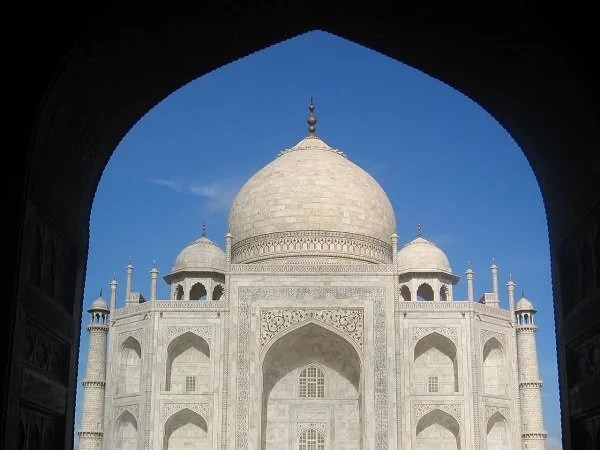
The best places to take photos inside the Taj Mahal, Agra
First, there is the shot in front of the reflection pond. As soon as you enter the Taj Mahal, do not stop at the main entrance or the arch. Instead, head to the reflection pond, passing by the raised platform with the benches.
Many people will also stop there to take a photo on the bench made famous by the late Princess Diana. At the end of the platform you will see the beginning of the reflection pond and this is where you will want to get the perfect photo of the Taj Mahal.
The next main photography point is through the arches of one of the sandstone buildings to the right or left of the Taj. If you are there for sunrise, make sure you go left first. This is where you’ll be able to capture that perfect morning glow as the sun begins to rise.
If you need to take that photo of Princess Diana, jump over the bench near the front door and walk to the back. Just outside the jamat khana (the building on the right), you will see a single bench. You’ll know you’re in the right place when the river is on your right and the Taj is right in front of you. With a wide-angle lens, the sky will perfectly envelop the Taj like a canopy.
If you have time, take a tuk tuk across the river to Mehtab Bagh (which translates to (“The Garden of Moonlight”). If you don’t want to pay the entrance fee to this garden (300 rupees), right next to the Moonlight Garden there is a road with a pretty decent view of the Taj Mahal as well. Most tuk tuk drivers knew where it is and will gladly take you there to take the perfect rear photo.
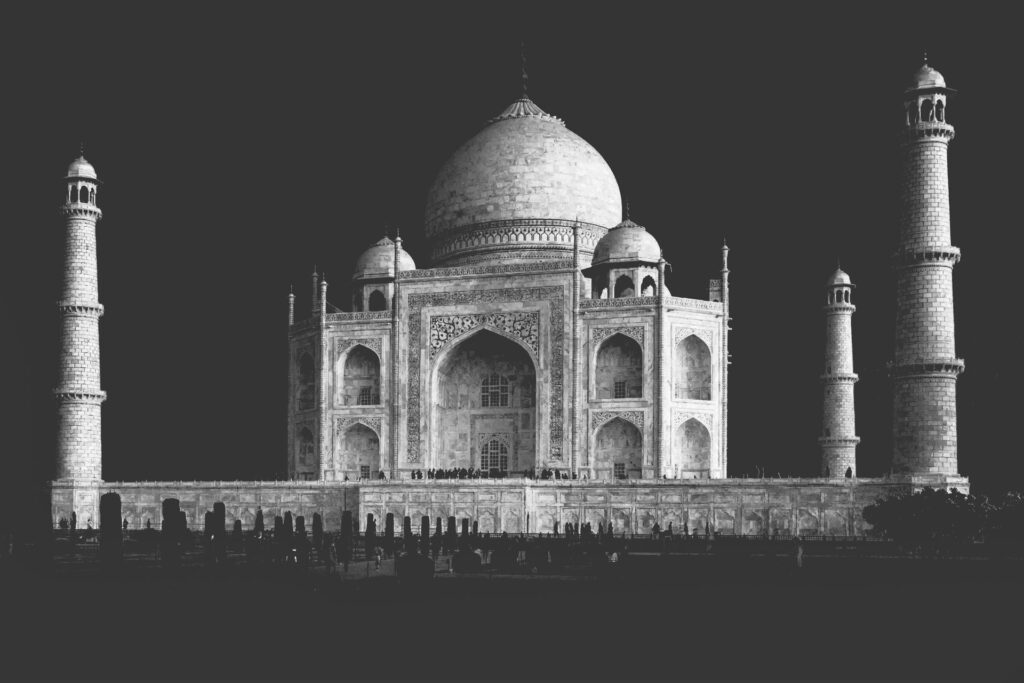
Visit the Taj Museum
The origin of the Taj Museum dates back to 1906, it was created under the orders of Lord Curzon, the British viceroy of India. It houses interesting artifacts from the Mughal era such as calligraphy specimens, utensils used in daily life, plans and drawings of the Taj Mahal.
The main hall has paintings done by Shah Jahan and his wife Mumtaz Mahal on ivory framed in ornate wooden frames.
Admission to the museum is free and it is open from 9am to 5pm daily except Fridays. There is no line to enter, you can walk in. There is no need for a ticket as it is inside the monument.
Take a guided tour
Touring the Taj on a guided tour is the best way to see this world wonder. The guides will take you to the Taj in a private car, help you get your tickets and go through security. They will also show you the Taj Mahal and give you all the information you want to know.
Guides can also protect you from the many notorious scammers and peddlers who hang out near the Taj Mahal trying to catch unsuspecting tourists.
If you visit the Taj with a guide, it is best to book through a hotel or through a tour company. Outside the Taj, many people pose as guides who are not actually qualified to do so. To avoid this scam, make sure you book in advance. We leave you a private excursion to the Taj Mahal.
If you choose not to use a guide at the Taj, just be sure to keep your wits about you and turn down anyone who asks for photos or to be your guide. You can buy an audio guide at the Taj entrance for about 105 rupees. Audio guides are available in many languages, including English, German, Spanish and French.

How to see the Taj Mahal without entering ?
Apart from entering the official grounds of the Taj Mahal, there are a few other ways in Agra to see the Taj Mahal. One of the most popular viewing points of the Taj is Mehtab Bagh, which is a large Mughal garden located across the Yamuna River.
Entrance to Mehtab Bagh costs around 300 rupees ($4) and the garden offers incredible views of the wonder of the world. This is an especially good place to see the Taj during sunrise. You can also see the Taj Mahal from many hotel rooftop restaurants in Agra.
You can see the beautiful mausoleum for free, from the roof of the Taj Ganj hotel. You can also get great views of the Taj from the dining room of the Oberoi Amarvilas luxury hotel. Lastly, you can see the Taj Mahal at a distance from the windows of the Agra Fort. The Agra Fort was also partially built by Emperor Shah Jahan and is the building where he was imprisoned by his son Aurangzeb.
How much does the entrance fee to the Taj Mahal cost?
- The entrance price to the Taj Mahal is different for locals and foreigners.
- Foreigners: 1,100 rupees (plus 200 for entry to the Taj mahal), about $17.
- Local: 250 rupees, about $6.
You can purchase tickets at the east gate entrance, and the west gate entrance, up to one hour before sunrise and 45 minutes before sunset.
We recommend that you buy your tickets online. It’s much easier, you get a discount, you don’t have to queue at the ticket office and then queue at the entrance. If you buy your tickets online a discount of 50 rupees.
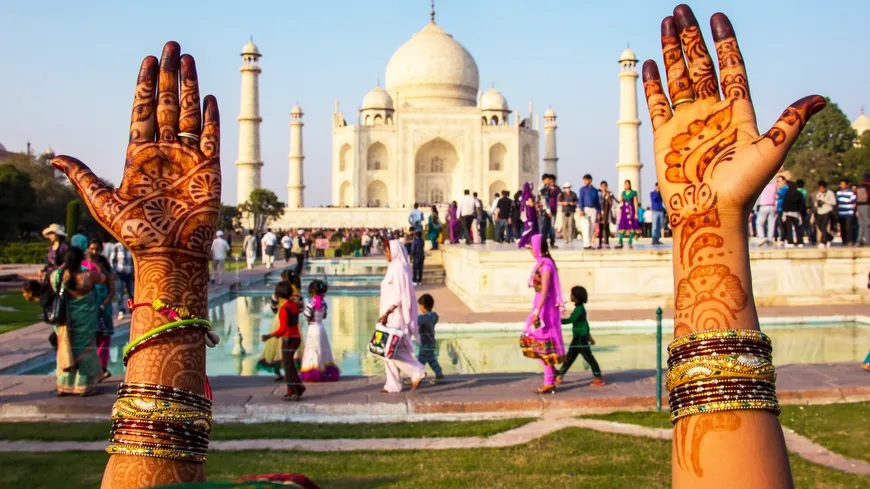
What time does the Taj Mahal open?
First of all, the Taj is closed on Fridays. The Taj Mahal is closed every Friday, so make sure you don’t plan your trip to Agra to coincide with this. There is a mosque on the grounds of the Taj Mahal, so they close the complex every Friday for people who want to attend religious services held there.
Every day, the Taj Mahal opens at 6 am and closes at 7 pm. These times approximately coincide with sunrise and sunset. It is also open at night for five nights around each full moon, from 8:30 p.m. m. until 12:30 a.m. m.
You can buy tickets at the Taj from 5:30 am to 6:30 pm. You can also buy your ticket the day before. If you plan to visit Sunrise and don’t want to have to wait in line with everyone else to buy your ticket, you can get one in advance the day before.
The history of the Taj Mahal, Agra
The Taj Mahal in Agra is one of the Seven Wonders of the World, but that is not the only reason it became so popular today. Just like its pristine beauty on white marble, the Taj Mahal is also surrounded by myths and mysteries. In fact, this mausoleum also tells a very interesting story.
Taj Mahal was erected under the order of Mughal emperor Shah Jahan. This splendid mausoleum was built to immortalize his love for his beloved wife, Mumtaz Begum. Mumtaz was a Muslim Persian princess, while Shah Jahan was the son of the Mughal emperor Jahangir. They married in the year 1612 and Mumtaz Mahal died in 1631 while she was giving birth to her fourteenth child.
The construction of the Taj Mahal began in the same year i.e. 1631 and it took approximately 22,000 workers, 1,000 elephants and around 22 years to complete this time-defying monument. After spending more than INR 32 million, the Taj Mahal finally acquired the shape and structure we see today.
Shortly after the completion of the Taj Mahal in 1653, Shah Jahan was placed under house arrest by his own son Aurangzeb in the nearby Agra Fort. This mausoleum was stained by British soldiers who tore the precious and semi-precious stones from its walls during the Indian rebellion of 1857. Despite the torture of time and fate, the Taj Mahal remains the “epitome of love” and shines like a pearl.

Taj Mahal Architecture
It is not surprising that the participation of 22,000 workers and 22 years of time resulted in something extraordinary and the Taj Mahal is no exception to this. This Mughal monument is a perfect combination of Islamic, Indian and Persian architectural style. Thanks to its grand structure, the Taj Mahal remains one of the most attractive man-made monuments in the world.
The architectural beauty, in addition to the aesthetic beauty of the Taj Mahal, is another reason why it attracts historians to reveal its structural secrets. The entire Taj Mahal complex consists of five main components. These are Darwaza (main entrance gate to the mausoleum), Masjid (mosque), Bageechas (gardens), Naqqar Khana (rest house) and Rauza (main mausoleum).
The garden area of the Taj Mahal is the graphic representation of Jannat (heaven) on earth. The garden canals represent the promise of water, milk, wine and honey. The garden was meticulously planned to enhance the beauty and divinity of the entire complex.
The mausoleum features a white marble exterior inlaid with precious and semi-precious stones, namely jade, crystals, amethyst, turquoise, lapis lazuli and many more. The intricate designs were given lifelike shape with a technique called pietra dura.
The central dome of the tomb rises to a height of 240 feet and is flanked by four smaller domes. Four slender towers (minarets) can be seen at the four corners. These minarets slope slightly outward from the main dome to maintain the symmetrical design when viewed from afar.
Verses from the Quran were inscribed in calligraphic style on the arched doorways and many other parts of the Taj Mahal. Those beautiful and delicate patterns on the walls that we appreciate are actually verses from the Quran.
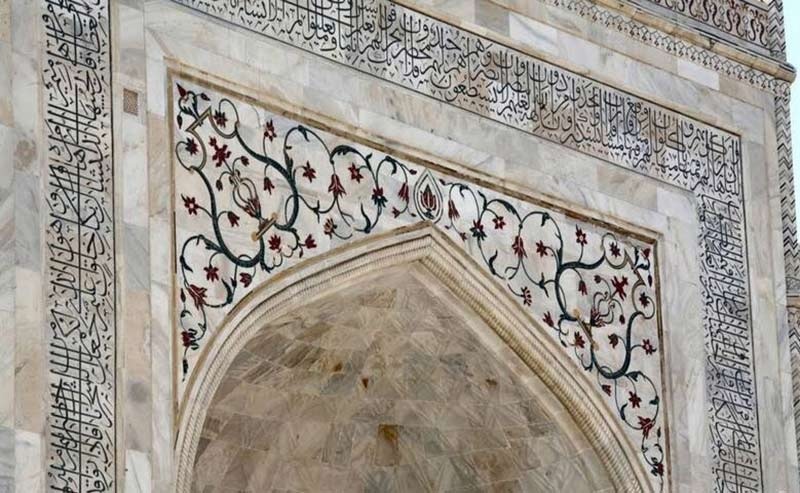
Location of the Taj Mahal
The Taj Mahal is located in Agra, India. Agra is a small city in northern India, a few hours’ drive or 220 kilometers (127 miles) from the capital, New Delhi. It is often visited on the Golden Triangle travel route, which includes India’s most popular stops: Delhi, Agra and Jaipur.
Agra was a very important city during the Mughal rule of northern India, but has since declined in political importance and today has only 1.7 million inhabitants. The Taj Mahal is located to the east of the city, near the banks of the sacred Yamuna River.
The Taj Mahal is located in the city of Agra, in the northern part of India. The nearest international airport is Indira Gandhi International Airport in Delhi, which is the city from which most travelers visit, either as a day trip or as part of a Golden Triangle itinerary.
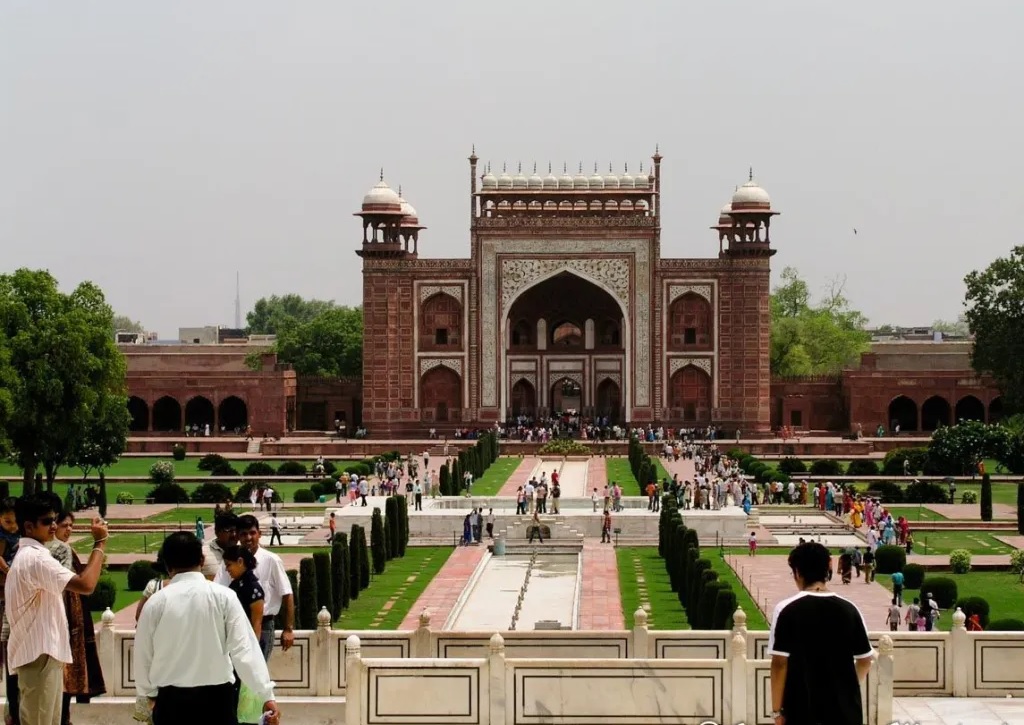
Ways to reach the Taj Mahal from Delhi
The Taj Mahal, an epitome of love and romance, is located in the city of Agra in Uttar Pradesh. This city is about 220 kilometers from the national capital of Delhi. Transportation is incredibly cheap; In fact, you can usually hire a rickshaw driver for a full day for around $35.
If you are planning to visit this ethereal architectural brilliance, you must know how to reach Agra to explore the beauty and secrets of the Taj Mahal. Here are the various ways to travel to Agra.
By air
Agra has its own airport, which is about 7 kilometers from the city center. Several domestic airlines operate a daily flight to Agra from major cities in India. If you are traveling from abroad, it is best to reach Delhi first and from there book your flight to Agra.
By train
A good number of trains connect Agra with the rest of India. The city is home to a total of three railway stations namely Agra Cantonment, Agra Fort and Raja-ki-Mandi.
By highway
Regular bus services are available from Agra to nearby major cities such as Delhi, Mathura, Jaipur and Lucknow. You can also hire a driver in Delhi to take you there. It is about a 3 hour trip (give or take for traffic).
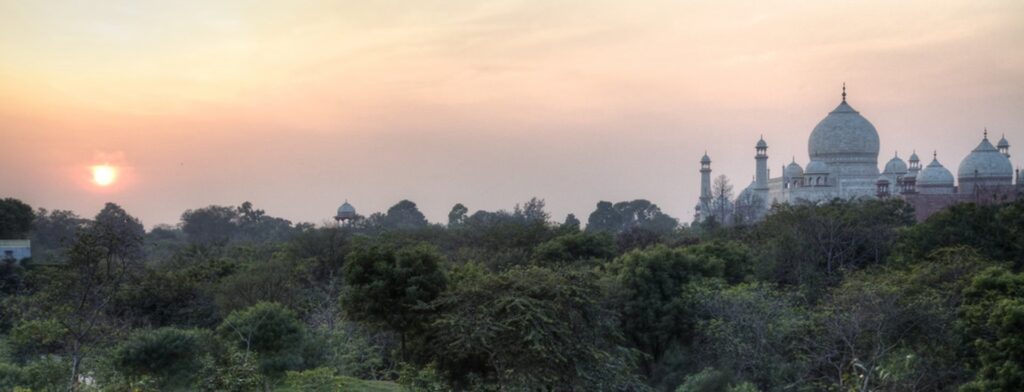
Curious facts about the Taj Mahal
- It is a mausoleum of ivory white marble.
- It was suggested that another Taj be built opposite this one, but with black marble.
- It was created by Shah Jahan for his third wife (her tomb is still inside).
- There are replicas of the Taj that are in Dubai and Bangladesh.
- They say the Taj won’t be around forever due to structural problems (so it’s best to visit soon).
- It is one of the new seven wonders of the world.
What to bring to the Taj Mahal
There is no dress code, but you should still be respectful. If you wish to enter the mosque, you must cover your head, shoulders and knees. It is hot in Agra and there is very little shade, so wear light clothing and make sure you use sunscreen.
On the other hand, Agra is also very cold in winter (November-February), so carry something woolen. The weather can be hot at the Taj Mahal in India. You should take off your shoes when you enter and the easier it is to put them on and take off, the better. This really applies to much of India, shoes with lots of laces are difficult.
- No food allowed inside.
- Cigarettes and lighters are also not allowed.
- Tripods and additional lighting equipment require prior permission to be brought. Photography inside the mausoleum is prohibited. Most electronic devices (except cameras and small video cameras) are not permitted.
- Beware of peddlers, thieves and rude merchants. It’s a busy, high-pressure area, but keep your wits about you and you won’t have to worry.
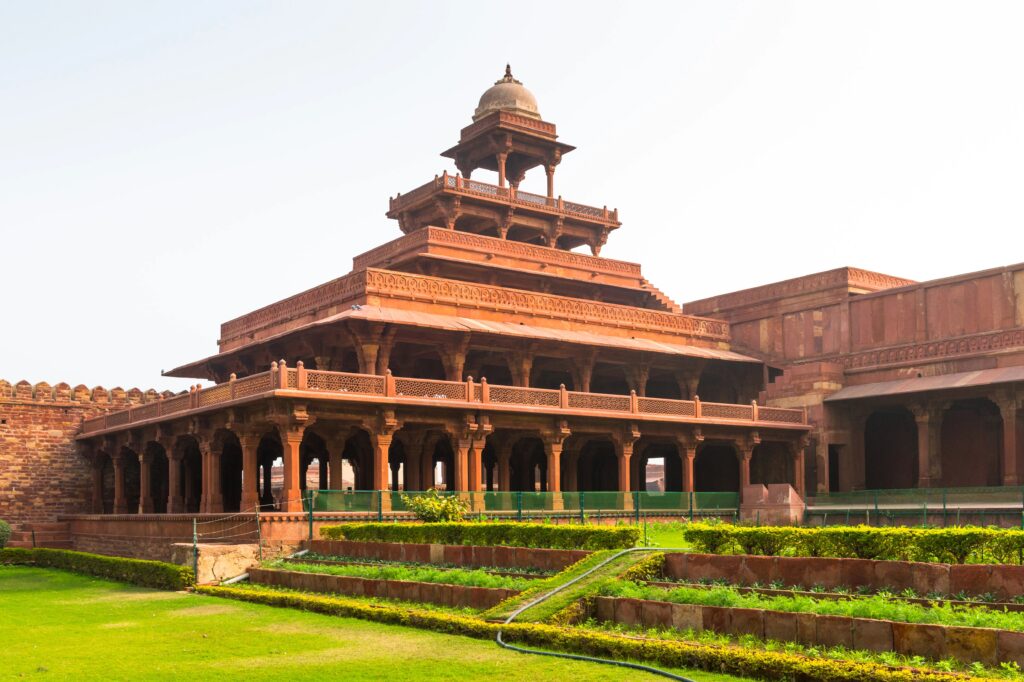
Best time and season to visit the Taj Mahal, Agra
The best time to visit the Taj Mahal is between the months of September to March. This is actually the main tourist season for most of northern India as well.
Except for a few days between Christmas and the first week of January, when there is too much fog early in the morning. Sunrise is actually the best time due to the fewer crowds, the better lighting at the Taj which gives you good photos and also you don’t have to endure the strong midday heat that is common in this part of the country.
This season from September to March has the most comfortable temperatures, ranging from 10° to 30°C (50° to 86°F).
- September – March: The most pleasant temperature, but also the most crowded.
- April – June: It can be very hot, with highs of 45°C (113°F).
- July – August: Monsoon season, so do your best to avoid visiting. If you do, bring an umbrella.
Attractions around the Taj Mahal
Agra Fort
When you have witnessed the beauty of the Taj Mahal, it is time to visit the nearby Agra Fort. This is another huge architectural marvel of the Mughal era. This Unesco World Heritage site was built under the instructions of the Mughal emperor Akbar. This fort derives its name from the red colored sandstone from which it is made.

Mehtab Bagh
Known as the “Moonlight Garden” it is a perfectly manicured garden located just opposite the Taj Mahal on the other side of the Yamuna River. This place offers a completely different perspective of Taj. This 25-acre garden complex was founded by the Mughal emperor Babur.
Fatehpur Sikri
It is another charming UNESCO World Heritage site, located near the Taj Mahal. It will take just an hour by road to reach this place from Taj Mahal. This wonderful fort city was founded by Emperor Akbar in the year 1571 and served as his capital until he decided to move to Delhi.
Now that you are equipped with all the information you need to visit the Taj Mahal, the only thing left to do is plan your trip. You will be surprised by this architectural wonder. It is definitely something you must see in your life.

